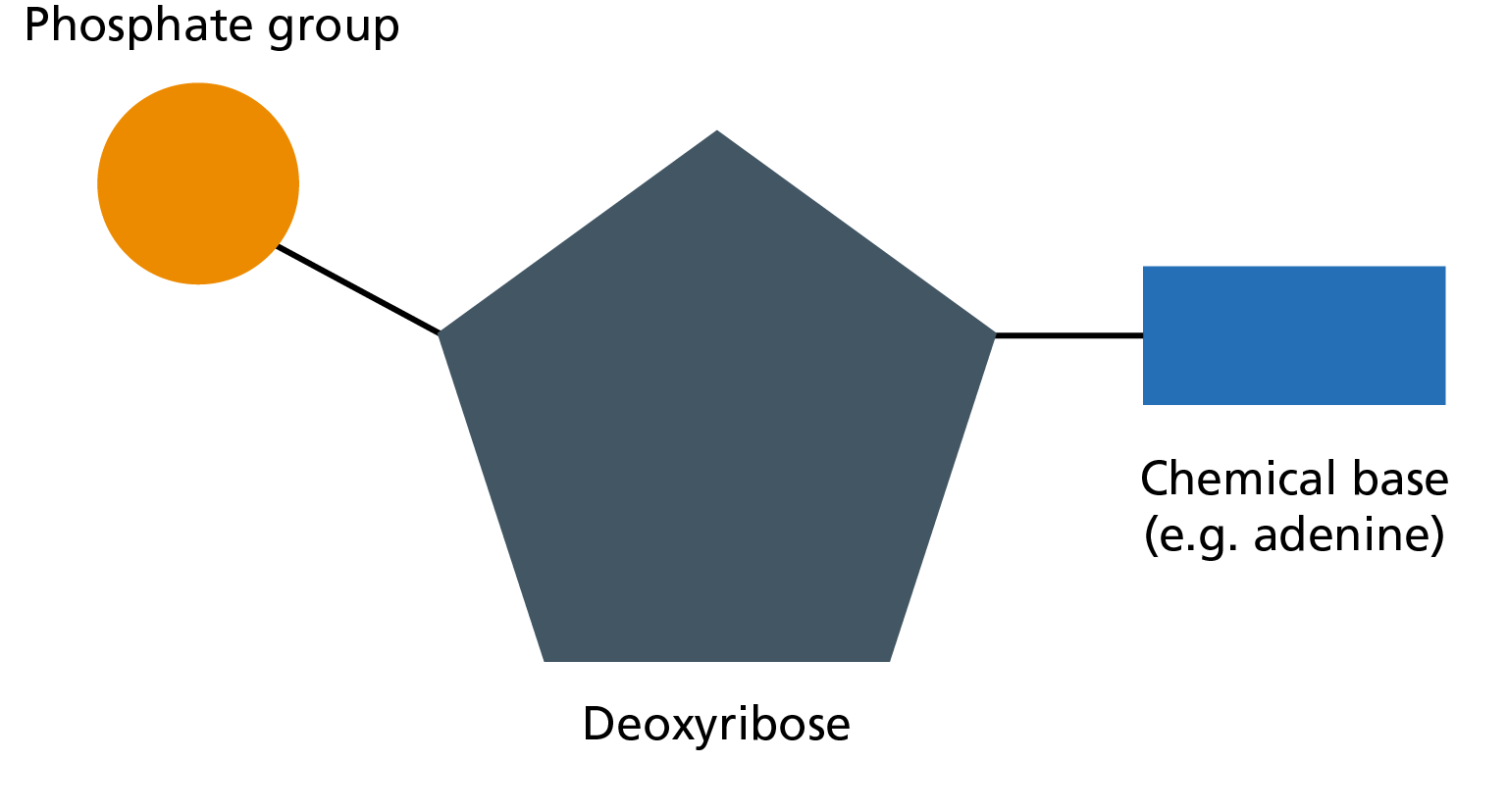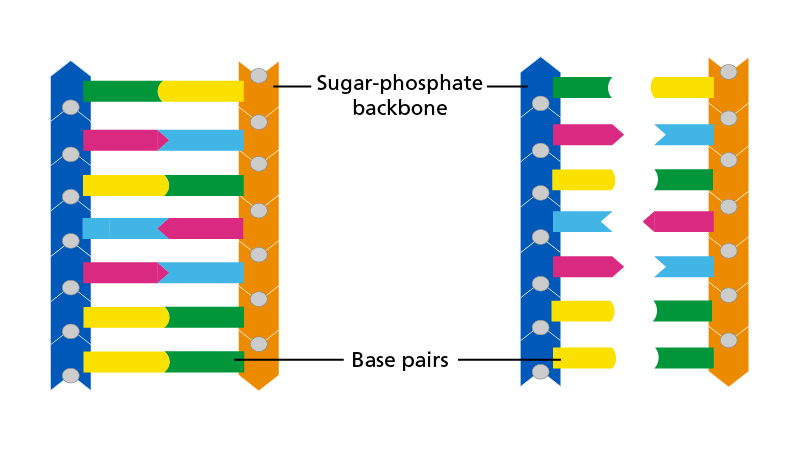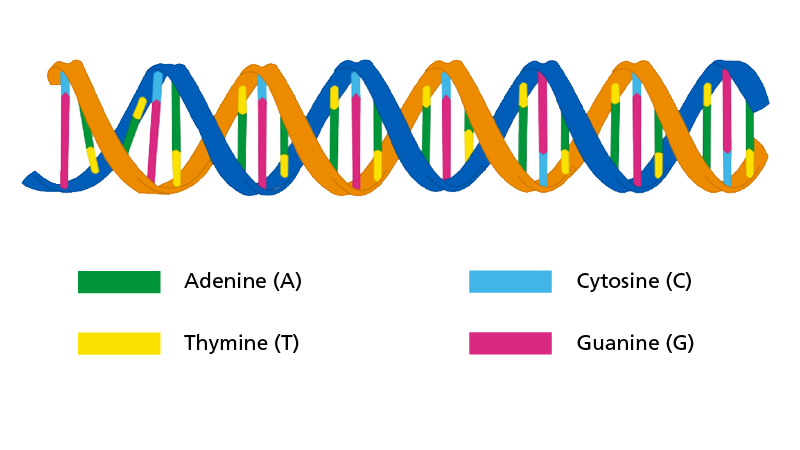DNA
Genetic material in almost all living organisms is stored in a biological molecule called DNA (deoxyribonucleic acid).
Where do we find DNA?
All living organisms contain genetic material, from single-celled bacteria and yeasts, to multicellular plants and animals, including humans.
What does DNA do?
The information contained within DNA includes all the information needed to grow and maintain an individual – be this a human, other animal, plant, bacteria or fungi. Changes to an organism’s DNA can have a significant impact on its phenotype.
Molecular structure
DNA is a nucleic acid made up of smaller units called nucleotides (see figure 1). A single nucleotide consists of a sugar called deoxyribose (the ‘D’ in DNA), a phosphate group and a chemical base represented by letters.
 Figure 1: A single nucleotide.
Figure 1: A single nucleotide.
There are four types of chemical bases in DNA:
- adenine (A);
- thymine (T);
- cytosine (C); and
- guanine (G).
It is the order or sequence of these bases that form an organism’s genetic code.
The molecular structure of DNA consists of two single strands, each made up of a string of deoxyribose and phosphate molecules, which are linked to each other by the chemical bases, A, T, C and G, forming a weak bond. The whole structure resembles a ladder (see figure 2).
 Figure 2: The DNA ‘ladder’.
Figure 2: The DNA ‘ladder’.
The DNA structure has a sugar-phosphate backbone on each side (dark blue and orange) with the rungs between made of pairs of chemical bases (green, yellow, pink and pale blue). The pairs can separate as shown in the image on the right.
The bases pair in specific ways:
- A always pairs with T.
- C always pairs with G.
This is known as the base pairing rule.
DNA: the double helix
The completed ladder is not flat: due to the organisation of the molecules and the bonds between them, it forms a spiral – the double helix (see figure 3).
 Figure 3: The double helix.
Figure 3: The double helix.
Figure 3 shows the twisting of the DNA ladder forming the double helix. The sugar-phosphate backbone is in dark blue and orange with the rungs between the backbones made of pairs of chemical bases (adenine (A) – green, thymine (T) – yellow, guanine (G) – pink and cytosine (C) – pale blue).
Video: What is DNA?
Key messages
- Most organisms, including humans, store their genetic information in a biological molecule called DNA.
- The order of the chemical bases in DNA – A, T, C and G – form an organism’s genetic code.
- A molecule of DNA forms a distinct structure referred to as the double helix.
Resources
For clinicians
- NHS England’s Genomics Education Programme: Genomics 101: From Genes to Genome